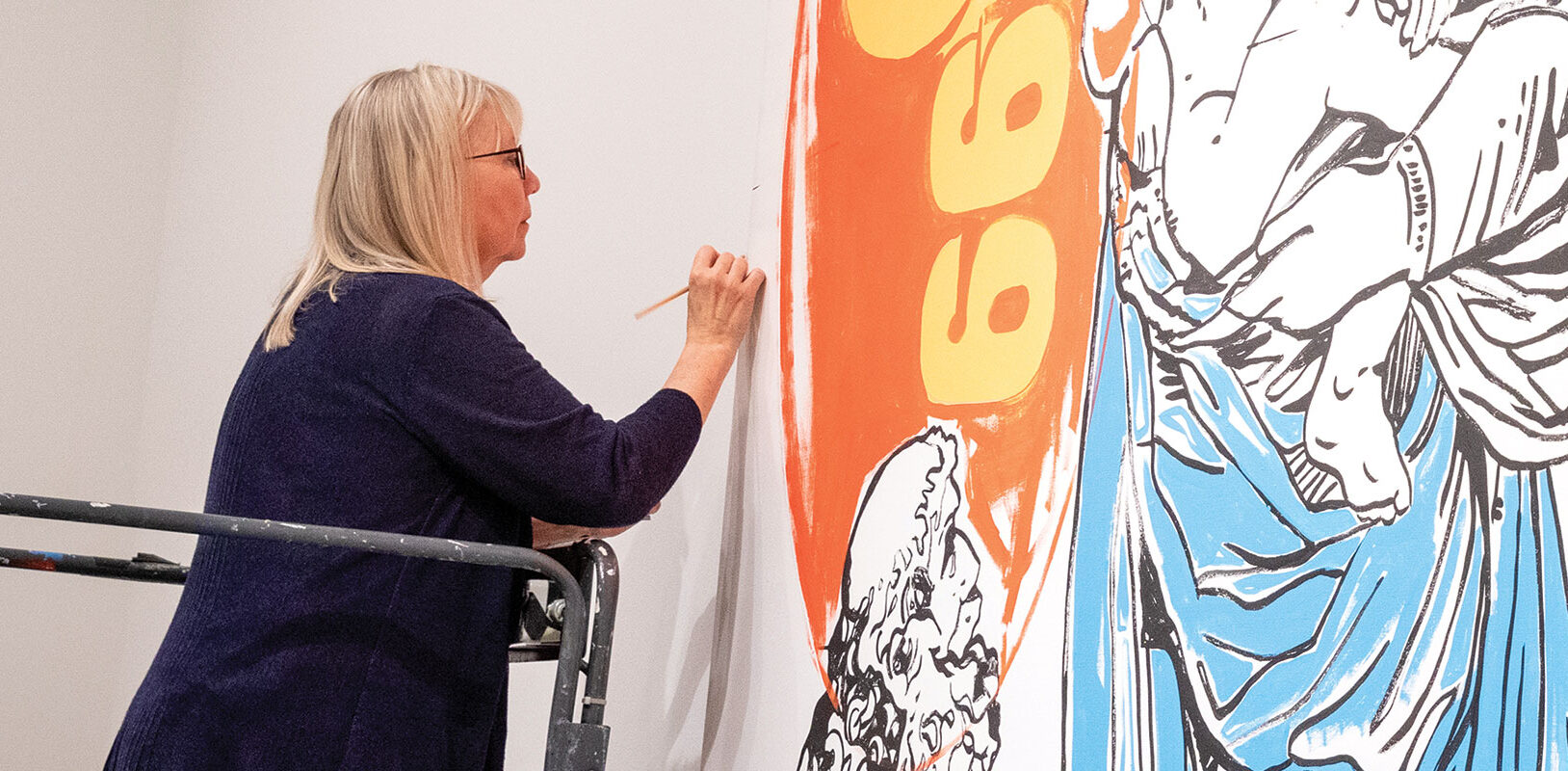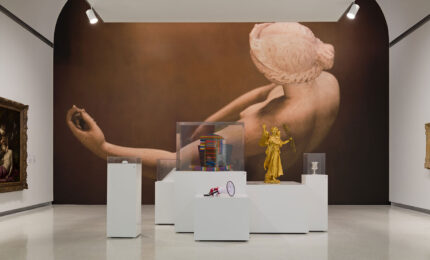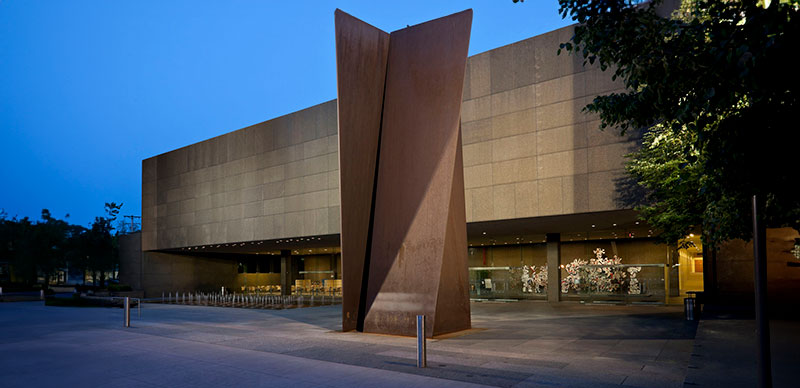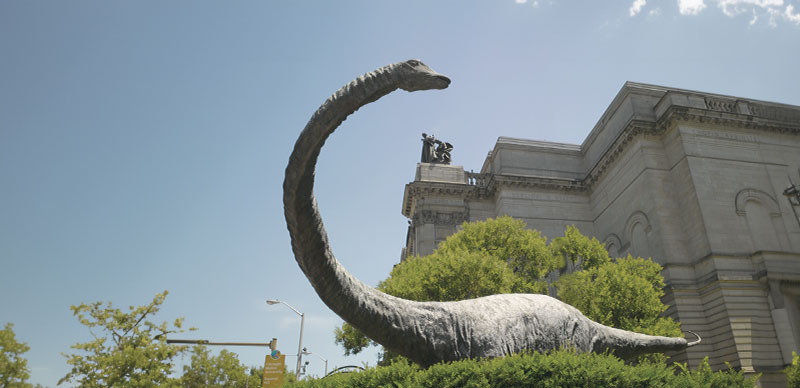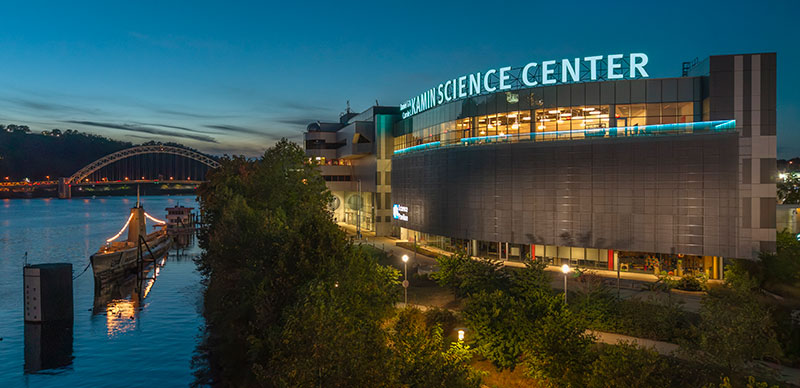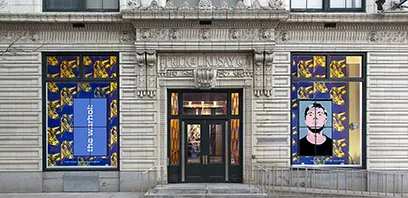Paintings conservator Christine Daulton is standing six feet off the ground on orange scaffolding set up on the fourth floor of The Andy Warhol Museum, in a space sectioned off from the public. CONSERVATION IN ACTION reads the sign. NO PHOTOGRAPHY PLEASE.
The space is bright. Quiet. There are concrete floors and stark white walls punctuated by three vivid paintings. One is Raphael Madonna-$6.99, made using acrylic paint on a massive 13-by-9-foot linen canvas, over which Daulton glides a goat hair brush to remove invisible-to-the-eye fibers. “Generally, that’s what we use to brush over any painting,” she says. “I have it taped around the edge so that the ferrule [metal fastener] can’t scratch the painting.”
She continues brushing in silence using small, even strokes. Section by section. Swish. Swish. Swish.
This is one step in the painstaking process required to clean any painting; in this case, to treat grayish areas along the edges that streak across the canvas like jagged, horizontal stripes. “The last time this piece was cleaned was 1996,” she says. Armed with cotton swabs, she applies pH-adjusted distilled water and a solvent for the greasier spots. “What you’re seeing is dirt, dust, and oils from people’s hands after being handled for years.”
On any given day, Daulton diagnoses, monitors, and treats artwork, both structurally and restoratively. “Just as physicians need to keep up with the literature on medicine, conservators have the same responsibility to keep abreast of research being done in conservation,” says Daulton, who has been working with the museum’s collection since 2001.
“She has this incredible knowledge of Warhol’s techniques, materials, and specific histories of each painting that could impact their long-term preservation.”
– Amber Morgan, The Warhol’s director of collections and registration
Wear and tear from travel, being frequently exhibited, and age are common issues that beg for her attention. Raphael is one of 39 works she treated in preparation for the museum’s much-anticipated fall exhibition connecting the artist’s Catholicism to his artistic production—Andy Warhol: Revelation, on view through February 16, 2020.
“I started treating this one months ago,” she notes. “Not every day, but on and off,” she says, picking up a small white pastel. She leans in closer to the canvas, gliding it over the discoloration, inch by inch. Gentle, circular strokes to make the discoloration less noticeable.
“When I use something like pencils or pastels to inpaint, I have to look at it from the angle that it will be seen, because it can look darker or lighter depending on how the light hits it,” she says. “So, I try to always go at it from underneath and look up. When I work down on the lower sections, I’ll have to stand up and look down on it.”
Daulton earned her master’s degree in art conservation from the University of Delaware. “As an undergraduate paintings major, Ithought I would get my master’s and teach, and then found out there weren’t any jobs.” So, she checked out from the library a book about careers in art. Art conservator looked interesting, with its fusion of art history, studio art, and science. “It was like I could have my cake and eat it, too,” she says.
“Christine is an amazing resource,” says Amber Morgan, The Warhol’s director of collections and registration. “We’ll spend hours talking about the components that go into a painting, the variables, and the sometimes unorthodox methods Warhol employed. She has this incredible knowledge of Warhol’s techniques, materials, and specific histories of each painting that could impact their long-term preservation.”
Back at Raphael, it’s clear the conservation process is as exhausting as it is exhilarating. “I’ve been using a combination of watercolor pencil and pastel pencil—and, the thing is, this white is so much whiter than both my pencils that it’s hard to match,” Daulton notes. “I have hundreds of watercolor pencils and 10 different pastel pencils of white alone. Fortunately, Warhol’s work is often wrapped around the back, so I can test cleaning methods and colors on it.”
Daulton says she can usually work for three hours before needing a break. “These projects are so intense, and I have a limited amount of time to get everything done, so I really have to focus. When you do this kind of work, it doesn’t do you any good to push forward if you’re tired, because you can really make a mess of things.”
She gets up from her stool, takes a closer look, and starts blending again.
“I found Warhol’s paintings somewhat difficult to assess when I was first working on them,” she says. “You can’t always tell if something on them is deliberate, an accident, or damage. I have to look really hard at each painting and am still surprised by some things. But I’ve known these paintings for so long. It’s always a challenge, but one I’m happy to face.”
